Saints in the Family
They are our very own. They are from past generations, but their witness and spiritual legacy still live on and continue to inspire us.
“Nations shall come to your light” (Is 60: 3). The prophetic image of the new Jerusalem that spreads divine light on all the peoples clearly illustrates the life and tireless apostolate of St. Arnold Janssen. He zealously carried out his priestly work, spreading the Word of God by means of the new mass media, especially the press.
Obstacles did not dismay him. He liked to repeat: “Proclamation of the Good News is the first and most significant expression of love for one’s neighbor”. He now helps his religious family from Heaven, to continue faithfully along the tracks he marked out that witness to the permanent value of the Church’s evangelizing mission.
“And they went forth and preached everywhere” (Mk 16: 20). The Evangelist Mark ends his Gospel with these words. He then adds that the Lord never ceases to accompany the activity of the Apostles with the power of his miracles. Echoing these words of Jesus, the words of St. Joseph Freinademetz are filled with faith: “I do not consider missionary life as a sacrifice I offer to God, but as the greatest grace that God could ever have lavished upon me”. With the tenacity typical of mountain people, this generous “witness of love” made a gift of himself to the Chinese peoples of southern Shandong. For love and with love he embraced their living conditions, in accordance with his own advice to his missionaries: “Missionary work is useless if one does not love and is not loved”. An exemplary model of Gospel inculturation, this Saint imitated Jesus, who saved men and women by sharing their existence to the very end.
“Go into all the world”… All Christians are sent on mission, but to be authentic witnesses of Christ, one must strive constantly for holiness (cf. Redemptoris Missio, n. 90).
(Excerpts from the Homily by Pope John Paull II, October 5, 2003)
Saint Arnold Janssen

Arnold Janssen (1837-1909), during the difficult times for the Catholic Church in Germany when Bismark unleashed the “Kulturkampf» with a series of anti-Catholic laws leading to the expulsion of priests and religious and to the imprisonment of many bishops, proposed that some of the expelled priests could go to the foreign missions or at least help in the preparation of missionaries.
Slowly but surely, and with a little prodding from the Apostolic Vicar of Hong Kong, Arnold discovered that God was calling him to undertake this difficult task. Many people said that he was not the right man for the job, or that the times were not right for such a project. Arnold’s answer was, “The Lord challenges our faith to do something new, precisely when so many things are collapsing in the Church.”
With the support of a number of bishops, Father Arnold inaugurated the mission house on September 8, 1875 in Steyl, Holland, and thus began the Divine Word Missionaries. Already on March 2, 1879 the first two missionaries set out for China. One of these was Saint Joseph Freinademetz.
Aware of the importance of publications for attracting vocations and funding, Arnold started a printing press just four months after the inauguration of the house. Thousands of generous lay persons contributed their time and effort to mission animation in German-speaking countries by helping to distribute the magazines from Steyl. From the beginning the new congregation developed as a community of both priests and brothers.
The volunteers at the mission house included women as well as men. From practically the very beginning, a group of women, including Blessed Maria Virgo (Helena Stollenwerk), served the community. But their wish was to serve the mission as Religious Sisters. The faithful, selfless service they freely offered, and a recognition of the important role women could play in missionary outreach, urged Father Arnold to found the mission congregation of the “Servants of the Holy Spirit,” SSpS, on December 8, 1889. The first Sisters left for Argentina in 1895.
In 1896 Father Arnold selected some of the Sisters to form a cloistered branch, to be known as “Servants of the Holy Spirit of Perpetual Adoration”, SSpSAP. Their service to mission would be to maintain an uninterrupted adoration of the Blessed Sacrament, praying day and night for the church and especially for the other two active missionary congregations.
Father Arnold died on January 15, 1909. His life was filled with a constant search for God’s will, a great confidence in divine providence, and hard work. That his work has been blessed is evident in the subsequent growth of the communities he founded: more than 6,000 Divine Word Missionaries are active in 63 countries, more than 3,800 missionary Servants of the Holy Spirit, and more than 400 Servants of the Holy Spirit of Perpetual Adoration.
Saint Joseph Freinademetz
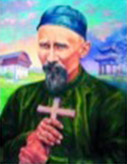
Joseph Freinademetz (1852-1908) had a missionary heart and a great man of prayer. A pioneer of the Divine Word Missionaries in China, he learned how to discover the greatness and beauty of Chinese culture and to love deeply the people to whom he had been sent. He dedicated his life to proclaiming the gospel message of God’s love for all peoples, and to embodying this love in the formation of Chinese Christian communities.
He animated these communities to open themselves in solidarity with the surrounding inhabitants. And he encouraged many of the Chinese Christians to be missionaries to their own people as catechists, religious, nuns and priests. His life was an expression of his motto: “The language that all people understand is that of love.”
While still studying theology in the diocesan seminary of Bressanone (Brixen), he began to think seriously of the foreign missions as a way of life. He was ordained a priest on July 25, 1875, and assigned to the community of Saint Martin very near his own home, where he soon won the hearts of the people. However, the call to missionary service did not go away. Just two years after ordination he contacted Father Arnold Janssen, the founder of a mission house which quickly developed into the Society of the Divine Word.
With his bishop’s permission, Father Joseph entered the mission house in Steyl, Netherlands, in August 1878. On March 2, 1879, he received his mission cross and departed for China with Fr. John Baptist Anzer, another Divine Word Missionary. Five weeks later they arrived in Hong Kong, where they remained for two years, preparing themselves for the next step. In 1881 they travelled to their new mission in South Shantung, a province with 12 million inhabitants and only 158 Christians. Those were hard years, marked by long, arduous journeys, assaults by bandits, and the difficult work of forming the first Christian communities. As soon as a community was just barely developed an instruction from the bishop would arrive, telling him to leave everything and start anew.
Soon Father Joseph came to appreciate the importance of a committed laity, especially catechists, for first evangelization. He dedicated much energy to their formation and prepared a catechetical manual in Chinese. At the same time, he put great effort into the preparation, spiritual formation and ongoing education of Chinese priests and other missionaries. His whole life was marked by an effort to become a Chinese among the Chinese, so much so that he wrote to his family: “I love China and the Chinese. I want to die among them and be laid to rest among them.”
When the bishop had to travel outside of China in 1907, Father Joseph took on the added burden of the administration of the diocese. During this time there was a severe outbreak of typhus. Father Joseph, like a good shepherd, offered untiring assistance and visited many communities until he himself became infected. He returned to Taikia, the seat of the diocese, where he died on January 28, 1908. He was buried at the twelfth station of the Way of the Cross, and his grave soon became a pilgrimage site for Christians.
He was beatified with our Founder, Father Arnold Janssen, on October 19, 1975. They were both canonized on October 5, 2003 by then Pope John Paul II.
Blessed Maria Virgo

Blessed Maria Virgo, Helena Stollenwerk (1852-1900), already as a young child, felt called to missionary work, inspired by the annuals of the Holy Childhood Association (now Papal Work for Children). At the same time she had an inclination towards adoration and contemplation.
The sense of this two-fold vocation was a source of joy and spirit of self-giving. At the age of ten she became a promoter of the Holy Childhood Association. She maintained the task for twenty years, until she entered in Steyl.
Helena searched for a religious order with foundations in China but found none. In addition, the Kulturkampf forced many congregations to close their German houses and seek possibilities for life and apostolic activity in other countries. Tirelessly, she continued to search for an order where she could fulfill her missionary vocation.
In 1882 she came into contact with Father Arnold Janssen who had founded his mission institute in Steyl. At the end of December that year she went to Steyl, although there was no women’s congregation as yet. Father Arnold Janssen was still struggling with difficulties of the mission house for men, founded in September 1875. Although he was thinking of founding a women’s institute, and said as much in his conversation with Helena, he could not make any promises.
Trusting in God, however, and filled with the longing to be sent to China as a missionary, Helena left her home and her inheritance to take a place on the lowest rung of the social ladder. A mature woman of 30, she worked as a kitchen maid in the mission house of the Society of the Divine Word. She persevered there for a full seven years, doing the lowliest and heaviest work, accompanied by three other women who, like her, were hoping for the fulfillment of their missionary vocation.
Finally on December 8, 1889, the mission congregation of the Servants of the Holy Spirit was founded. The “kitchen maids” became postulants and after some time began their novitiate. There was no experienced guide available, so Father Arnold Janssen asked Sister Maria, as Helena was now called, to be novice directress, although she was still a novice herself. At the same time, she had the responsibility for the entire community.
In November 1895 the first missionary Sisters were sent to Argentina, in 1897 another group left for Togo. Sr. Maria prepared the sisters for their departure but she herself was not sent out. Gradually, the recognition matured that she was called to be co-foundress of the congregation and her place was in Steyl. China, however, continued to hold first place in her missionary heart. As she grew older, her second vocation became stronger, namely to contemplation and adoration. When the cloistered adoration Sisters were founded on December 8, 1896, she hoped to be among them. But an adverse situation prevented the fulfillment of that wish and she remained as “mother” and spiritual companion of the missionary Sisters. She dedicated herself totally to that task, cultivating in her Sisters the fire of love and the mission zeal that consumed her own life.
Two years later, however, at the wish of Father Arnold Janssen she did transfer to the adoration Sisters. Once again, she went down to the lowest rung of the ladder: she the co-foundress and first leader of the Mission Congregation became a novice and followed those whom she had formerly initiated into the first stages of religious life. But during her first year of novitiate, she fell very sick. On January 31, 1900, on her deathbed, she took the vows as an adoration Sister and was given the religious name Maria Virgo. Three days later, February 3, 1900, she died. Her last words were: “Jesus, I die for you.” On May 7, 1995, she was “beatified” (called “Blessed”) by the Church. This faithful servant of the Lord had lived by her motto: “To God the honor, to my neighbor the benefit, and to myself the burden.”
SVD Martyrs

On June 13, 1999 four Divine Word Missionaries were declared blessed (the last official step before sainthood is declared). The four are among 108 Polish martyrs of the Second World War who were beatified. The ceremony, presided over by then Pope John Paul II, took place in Warsaw, Poland.The four who were beatified in June were all Poles murdered by the Nazis during the Second World War, and therefore are also honored as martyrs who died because of the faith they professed. Below are their individual stories.
Blessed Luis (Ludwik) Mzyk

Luis (Ludwik) Mzyk (1905-1940) was martyred as novice master of the Polish Province. After philosophy studies in St. Augustin he was sent to study in Rome where he was ordained in 1932. He applied to work as missionary in Japan or China, but the superiors appointed him for Poland where the SVD needed qualified personnel and where the initial formation program had just began.
So, he continued his stay in Collegio del Verbo Divino, studied dogmatic theology at the Gregorian University, and finished his studies with a doctorate. In the Polish Province, he became novice master at Chludowo where from the very start he showed evidence of holiness. The novices were impressed by his simplicity, humility and courteousness. His very presence promoted harmony in the community. Shortly after the beginning of the war he was arrested and put in the maximum security prison in Poznan where he was cruelly killed on February 20, 1940.
Blessed Gregory Frąckowiak
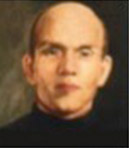
Gregory Frąckowiak (1911-1943) was the youngest one among the four martyrs and was beheaded in the prison in Dresden on May 5, 1943 when he was 32 years old. As receptionist and bookbinder he showed a special sensitivity to the poor who used to come to him asking not only for material help but also spiritual help.
Among the people of the area he was remembered as someone with a special sensitivity towards the poor. Some called him the “friend of the poor.” His gentleness, simplicity and deep spirituality were also appreciated by the students of the minor seminary. When Brother Gregory professed final vows on September 8, 1938, he was deeply convinced that he was offering his life to God for the mission of Christ and the Church.
At the beginning of the war in 1939 the SVD house in Górna Grupa where he stayed was closed down and confiscated and the confreres were expelled. Brother Gregory consciously offered his life as a substitute for others. Some people were involved in distributing the fliers against Hitler’s dictatorship. The group was discovered and many persons were arrested. It was clear that some would be sentenced to death. Bro. Gregory, after consultation with his confessor, freely presented himself to the police and took responsibility for the distribution of the fliers. Due to his sacrifice some fathers of families were spared. Brother Gregory was brought to Dresden where he was beheaded. Many others met a similar death not only in Hitler’s time but also in the first years of East Germany under communism.
A few hours before his death Gregory wrote to his relatives. Some sentences from that letter reveal his readiness for death: “I am writing to you for the last time in this world. By the time you receive this letter I will no longer be among the living. Today at 6:15 p.m. I will be executed. Please pray for me. It is already one o’clock and at two o’clock the priest will bring me Jesus. Don’t cry, but pray for my soul. I am completely at peace. I greet you all and I will wait for you in God’s presence.”
Blessed Stanislaus Kubista
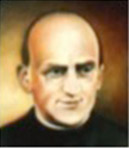
Stanislaus Kubista (1898-1940) was a mission animator and communicator. His contribution to mission animation was amazing. As director of the SVD printing press in Poland he shared the Founder’s enthusiasm for the printing and editorial apostolates. He edited two missionary magazines, wrote articles and published a book.
His communication activities came to a halt with the outbreak of the war. His own life echoed the tragedy of the Polish people. Soon he was under house arrest at Gorna Grupa, and there he watched helplessly as his press was dismantled and equipment and paper were hauled away. On February 5, 1940 he was brought to the concentration camp at Stutthof. After two months he was sent to Sachenhausen to a life of brutal treatment and forced labor. But even in these circumstances he exhibited gentleness, modesty, serenity and concern for others – as testified by survivors who were with him then.
Blessed Aloysius Liguda
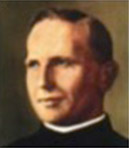
Aloysius Liguda (18989-1942) was a good educator and was often sought out as a spiritual director. As chaplain in schools he was appreciated and loved by young people. His conferences during recollections and retreats were valued. One of his books of conferences went into three printings. The reading for Office of Readings on the feast day of the SVD Martyrs is taken from his writings.
A man of great tranquility and with a sense of humor, Aloysius was of enormous help to other prisoners in the concentration camp in Dachau. In a situation of human horror he was able to help people spiritually and psychologically, and encouraged them not to give up. Along with nine other prisoners he was drowned in Dachau on December 9, 1942.
Blessed Josepha
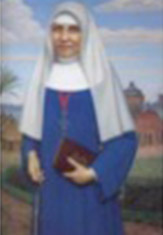
Blessed Josepha, Hendrina Stenmanns (1852-1903), was a woman of unassuming simplicity, kindness of heart, gratitude and joy. She was known to be a practical woman of quick thought and decision, of loving concern for the poor, the sick and needy and whose heart was always in the right place.
Even as a child, she was concerned for the poor and suffering whom she visited with her mother. At the age of 19, she joined the Franciscan Third Order which nurtured in her a spirit of simplicity and a deep prayer life.
Her wish to consecrate herself to God increased as she absorbed the Franciscan spirit, but the German Kulturkampf (which sought to subject the Roman Catholic Church to State controls) made religious life impossible. When her mother was dying, Hendrina promised to care for her siblings. It began to look as though she would have to renounce the idea of religious life.
Some years later she found her way to Steyl, Holland, where German-born Father Arnold Janssen, due to the Kulturkampf, had gone to establish a center to train priests for mission work. Father Janssen accepted Hendrina’s request to be part of the Mission House as a kitchen maid. Her real intention, however, was to support the mission cause by her work in the kitchen. When she arrived in Steyl, she was almost 32 years old. She did not have great plans, but simply wished to do what she recognized as God’s will for her at each moment. A life of hard work and renunciation began that was to last five years as she waited for the women’s branch of the Mission House to be founded. On December 8, 1889, she and a few other women became postulants. The foundation of the Missionary Sisters Servants of the Holy Spirit had been laid. The novitiate followed and then in March 1894 she professed first vows and was given the name Josepha.
Sister Josepha was responsible for the practical matters in the house. Later on as directress of postulants she showed great understanding of human nature and was able to introduce young women into religious life with wisdom and empathy. She was known above all for her love of prayer; she progressed ever more into interior quiet and true contemplation in the midst of her manifold tasks. She loved to pray the rosary and short prayers, especially “Come, Holy Spirit” which became her “mantra”, leading her inward to the presence of God in the tabernacle of her heart.
In spite of the burden of work and the demands made by a large, young community, she did not lose herself in pure activity. In the depths of her heart she remained in union with God and maintained her inner peace. For Mother Josepha, religious life meant belonging to God entirely. The final months of Sister Josepha’s life were marked by serious and painful illness. On her deathbed, suffering from asthma, she bequeathed her spiritual testament to the Sisters: “Every breath of a Servant of the Holy Spirit ought to be: ‘Come, Holy Spirit’”. She died on May 20, 1903 and was beatified in Steyl on Sunday, June 29, 2008.
